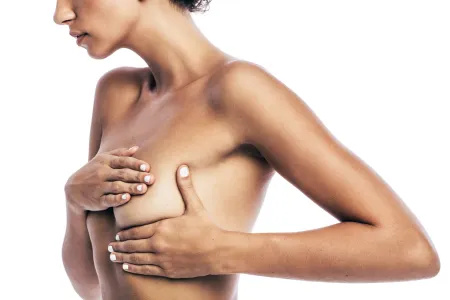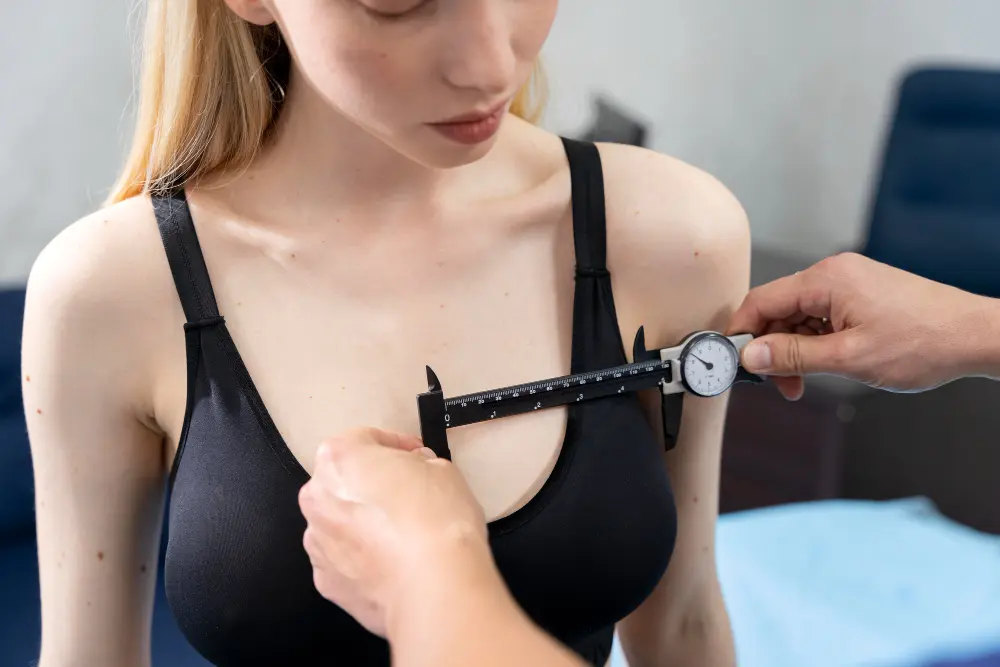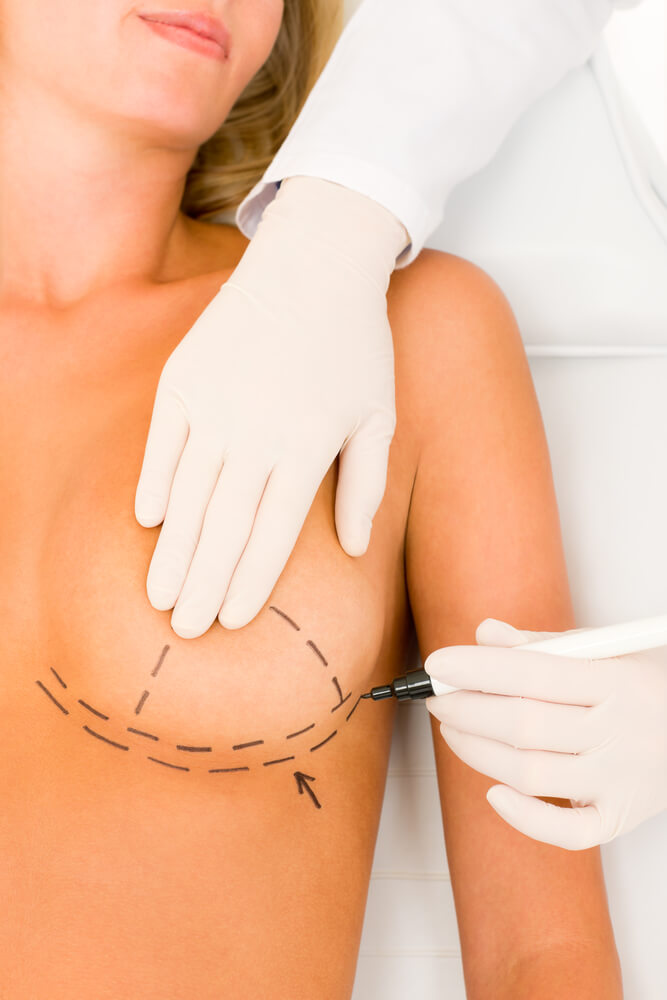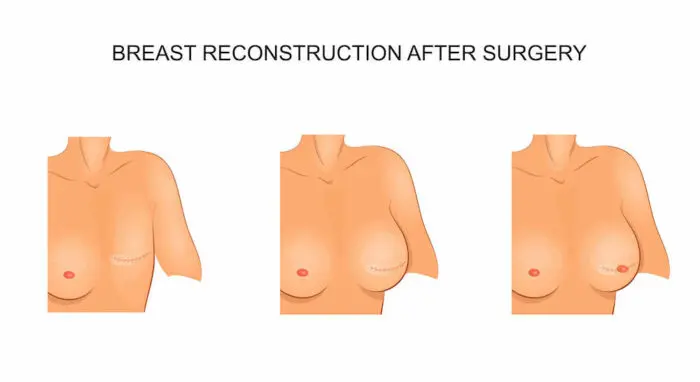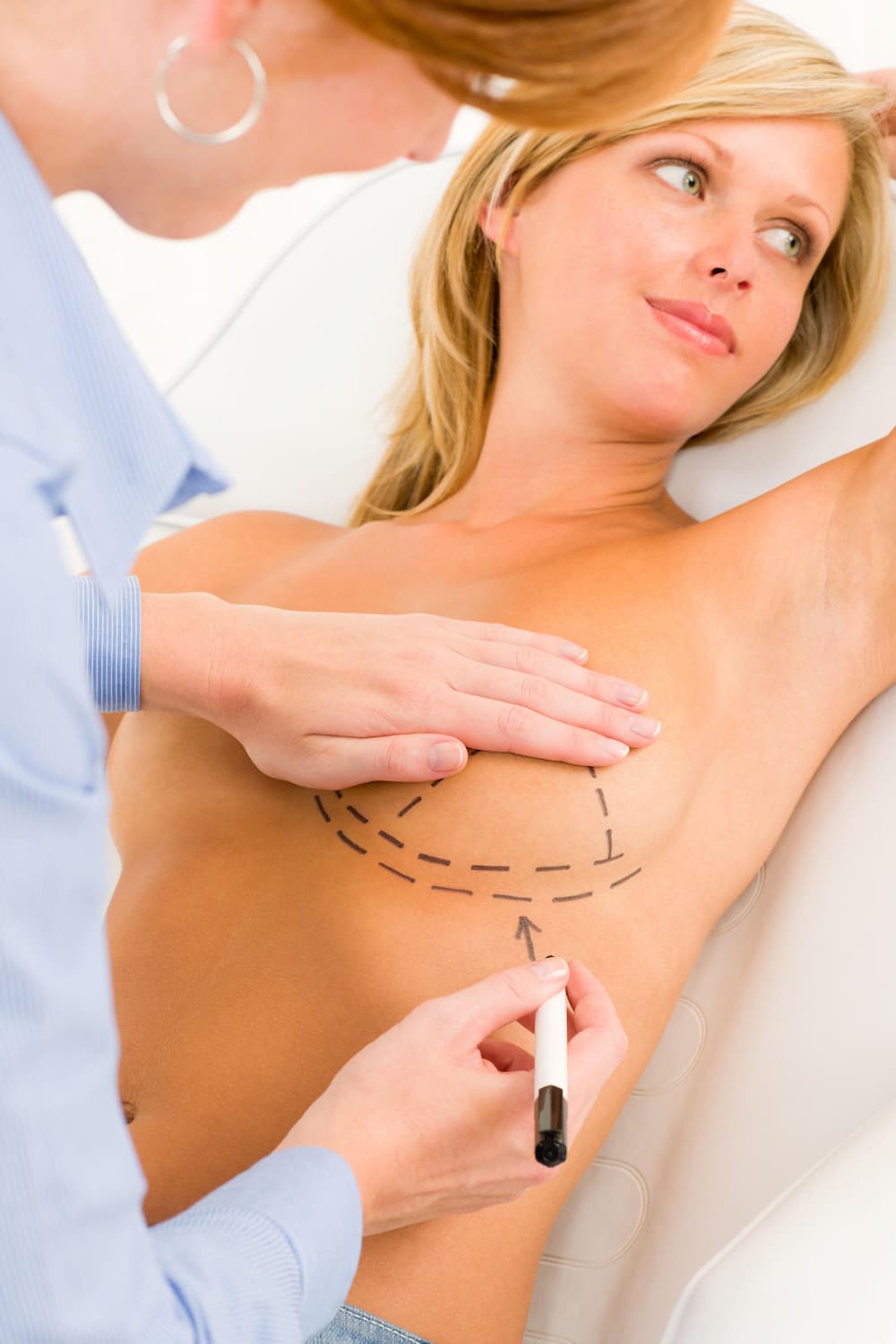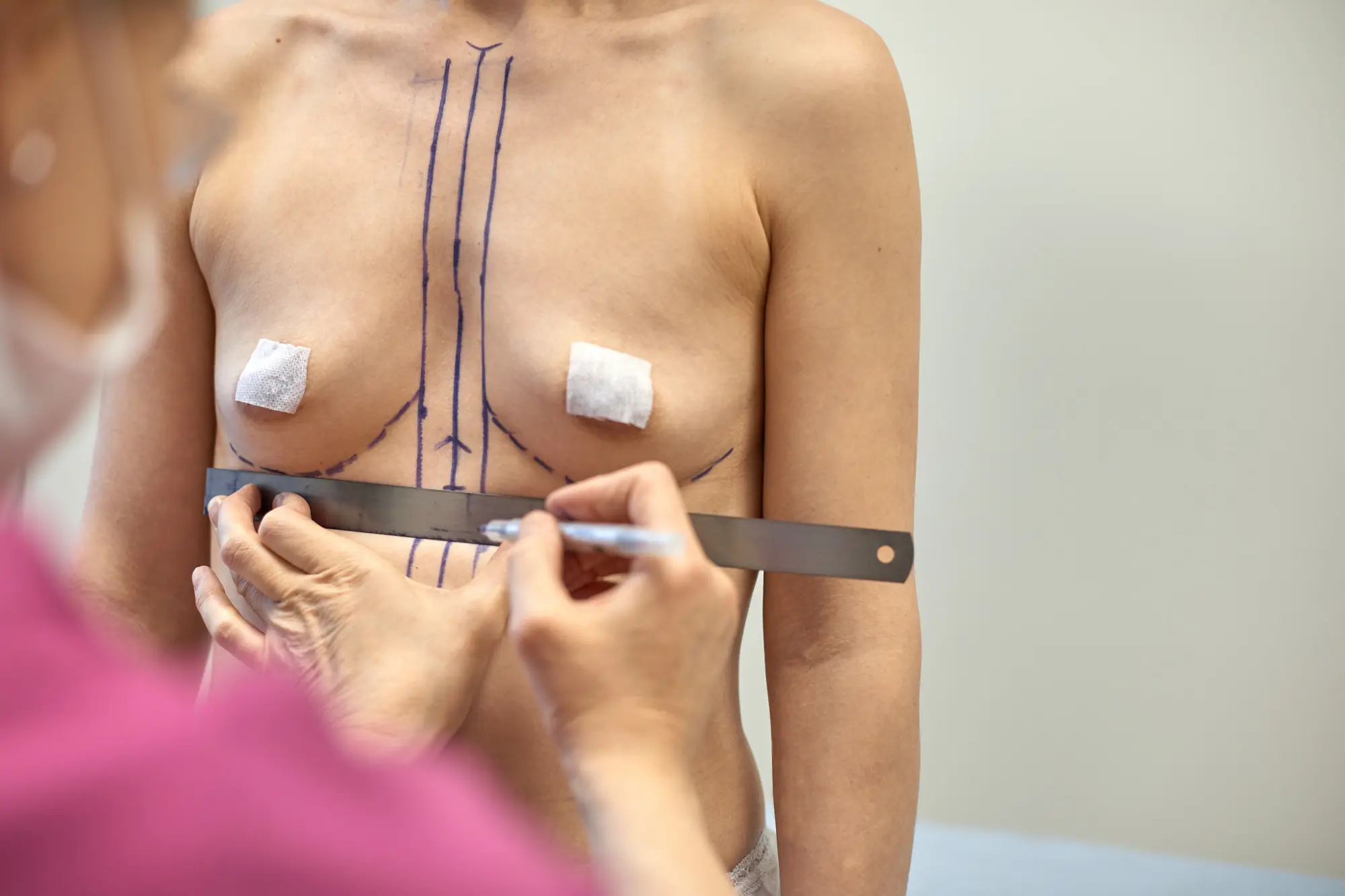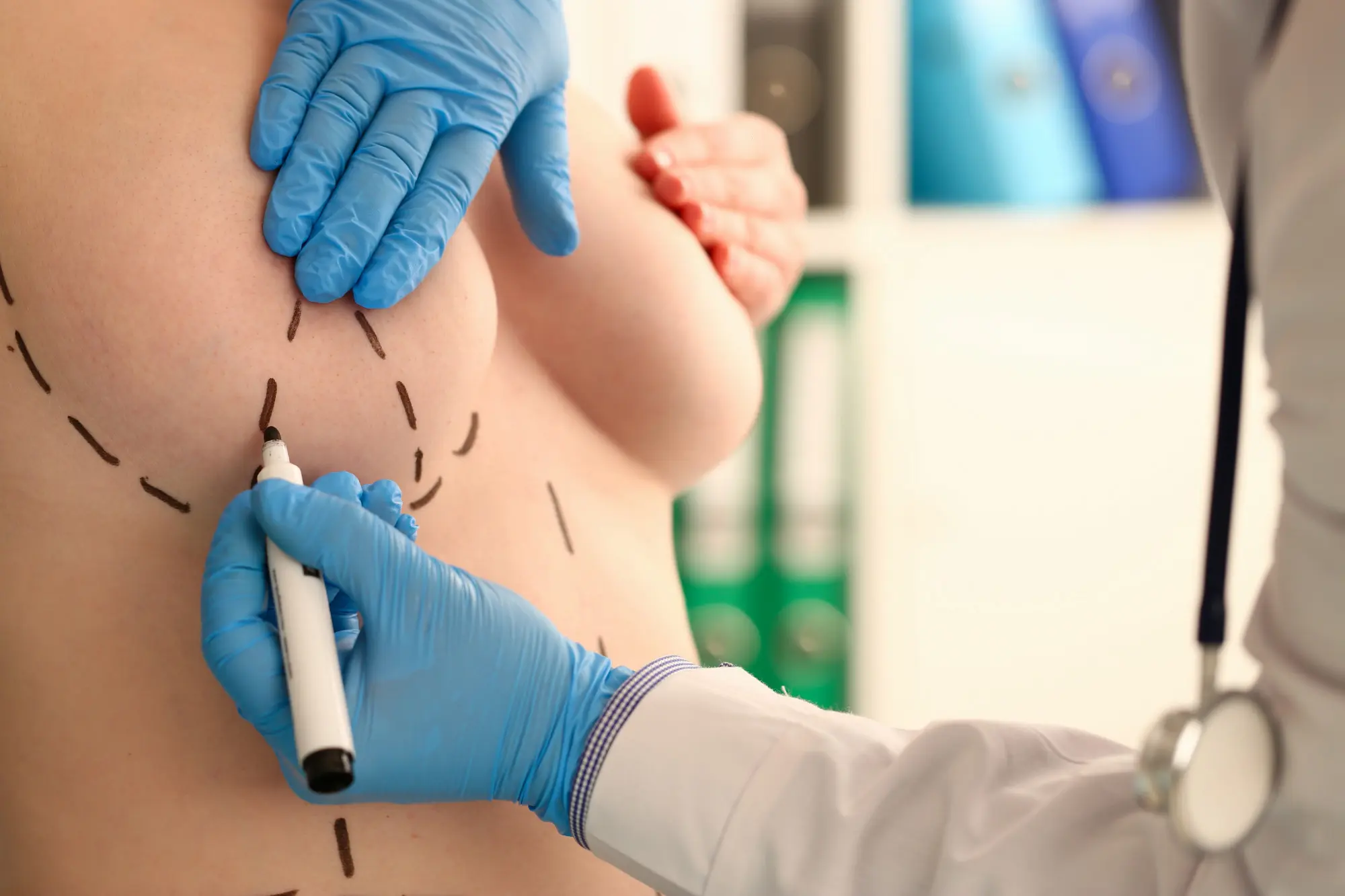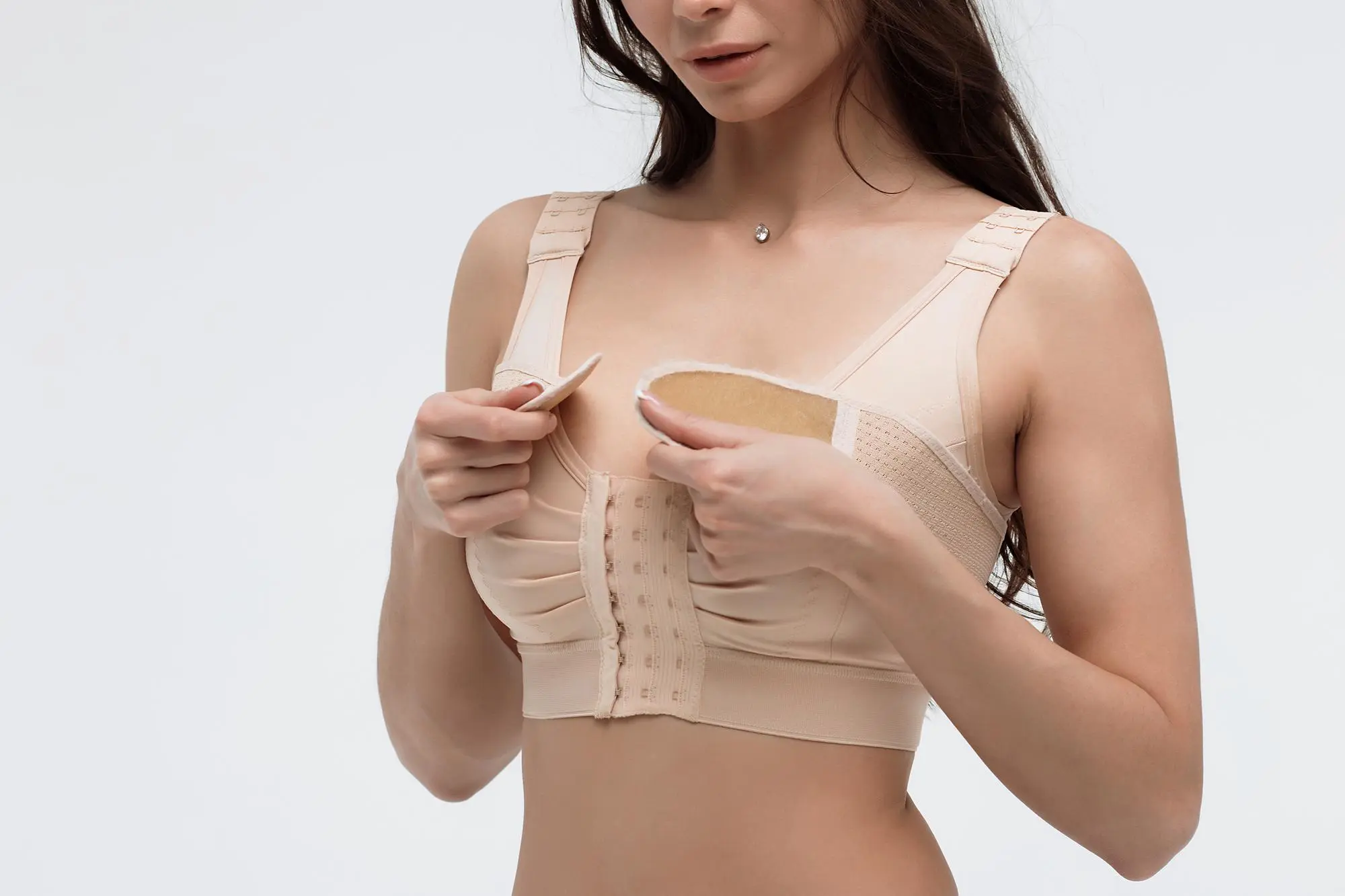What Is Breast Reconstruction Surgery?
Breast reconstruction surgery, also known as mastectomy reconstruction surgery, is a type of plastic surgery that is performed on women who have had their breasts removed due to cancer or other medical conditions. The surgery aims to rebuild the breast, restoring its shape and size, and can help improve a woman’s confidence and quality of life after a difficult experience.
You can call Dr. Burak today to improve your quality of life after these kinds of difficult experiences.
What Are the Types of Breast Reconstruction Surgery?
There are several types of mastectomy reconstruction surgery, including implant-based reconstruction and autologous reconstruction. Implant for breast reconstruction involves the use of a silicone or saline implant to create the new breast mound. This type of reconstruction is typically less invasive and requires a shorter recovery time than autologous reconstruction.
Autologous reconstruction, on the other hand, involves the use of tissue from another part of the body, such as the abdomen or buttocks, to create the new breast mound. This type of reconstruction can provide a more natural look and feel to the breast, but it is typically more invasive and requires a longer recovery time.
Within the category of autologous reconstruction, there are several different techniques available, including the DIEP flap which involves using tissue from the lower abdomen.
Another type of breast fix surgery is fat grafting. This technique involves using the patient’s own fat cells, harvested from other parts of the body, to create the new breast mound. Fat grafting can be used alone or in combination with other types of mastectomy reconstruction.
What Is a DIEP Flap?
A DIEP flap is a type of breast tissue expander surgery that uses tissue from the lower abdomen to reconstruct the breast. The term “DIEP” stands for “deep inferior epigastric perforator” which refers to the blood vessels that are used in the surgery.
During a DIEP flap procedure, the surgeon removes tissue from the lower abdomen, along with the blood vessels that supply it. The tissue is then shaped into a new breast mound and attached to the blood vessels in the chest. This technique preserves the abdominal muscles, which can help reduce recovery time and minimize complications.
DIEP flap surgery is a type of autologous reconstruction, meaning that the tissue used for the reconstruction comes from the patient’s own body. This can provide a more natural look and feel to the new breast, and can also help avoid the risks associated with implants.
DIEP flap surgery is typically performed as a separate procedure from the mastectomy, meaning that the patient will need to undergo two separate surgeries. However, in some cases, it may be possible to perform the DIEP flap surgery at the same time as the mastectomy.
If you want to discuss all options and potential risks with a qualified plastic surgeon to determine whether the procedure is right for you or not, you can contact MD. Burak now!
What Is Breast Reconstruction Surgery Procedure? What Happens When You Have It?
The procedure for breast fixation surgery will vary depending on the type of reconstruction you choose. Implanting a breast tissue expander involves placing a saline or silicone implant under the chest muscle or the remaining breast tissue. Autologous reconstruction involves using tissue from other parts of the body, such as the abdomen, back, or buttocks, to reconstruct the breast.
The breast reconstruction procedure typically begins with the placement of tissue expanders, which are temporary implants designed to stretch the remaining chest tissue and create space for the final implant for breast. This is done during the mastectomy or after as a mastectomy reconstruction, depending on the patient’s needs and preferences.
Once the tissue expanders are in place, the patient will undergo a series of appointments to gradually increase the size of the expanders. This process can take several weeks or months, depending on the patient’s individual needs.
When the tissue expanders have reached the desired size, the final implant will be placed. If the patient chooses autologous reconstruction, the tissue will be harvested from another part of the body and then used to reconstruct the breast. This procedure typically involves a longer recovery period and may require a longer hospital stay.
How Is Breast Reconstruction Surgery Performed?
Breast repair is basically performed in two ways;
Autologous Breast Reconstruction
- It takes place with the transfer of the person’s own tissues.
- Microsurgical technique can be used.
- The excess fat tissue in the abdomen of the patient is transferred to the breast area using microsurgical technique and a new breast is created. In this way, while getting rid of the excess tissue in the abdominal region, breast repair is achieved. In patients who do not have sufficient amounts of tissue in the abdomen, breast reconstruction can be performed using tissues in areas such as the hip, thigh, and waist.
- Generally, a more natural breast is obtained compared to the prosthesis.
- It is more resistant to possible radiotherapy.
- Requires slightly more surgical experience and skill than repair with a prosthesis.
Breast Reconstruction with Prosthesis
- Although it can be done with prosthesis used in breast augmentation, in cases where skin is needed, tissue expander prosthesis can be placed first and then it can be replaced with the permanent breast prosthesis.
- It is technically easier.
- The duration of hospitalization and return to normal life is faster.
- Early and late complications are more likely compared to autologous reconstruction.
- Less resistant to radiotherapy.
What Happens During and After Breast Reconstruction Surgery?
If you are considering mastectomy reconstruction, it is important to understand what happens during and after the procedure to make an informed decision.
During Breast Reconstruction Surgery
Breast reconstruction after mastectomy, which is known as immediate reconstruction, or it can be performed weeks, months, or even years later, which is known as delayed reconstruction. The type of breast tissue expander surgery that is performed will depend on the patient’s individual needs and preferences.
Recovery After Breast Reconstruction Surgery
The recovery period after breast fix surgery can vary depending on the type of reconstruction performed and the patient’s overall health. Patients may need to stay in the hospital for a few days, especially if they have undergone autologous reconstruction.
In the first few days after the surgery, patients may experience pain, swelling, and bruising. The plastic surgeon will prescribe pain medication to help manage these symptoms. Patients may also be required to wear a compression garment to help reduce swelling and support the reconstructed breast.
On the other hand, it is important to avoid any strenuous activity or lifting heavy objects for several weeks. Patients should also avoid driving until they are no longer taking pain medication.
Patients should attend all follow-up appointments with the plastic surgeon to monitor the healing process and ensure that there are no complications. Patients should also perform regular breast self-exams and attend routine mammograms as recommended by their healthcare provider.
What Risks and Complications Does Breast Reconstruction Surgery Have?
Breast repair surgery is a complex procedure that carries certain risks and potential complications, as with any surgical procedure. Understanding these risks can help you make an informed decision about whether the breast tissue expander is right for you or not.
Infection: Infection is a potential risk with any surgery. Antibiotics may be prescribed before and after surgery to help prevent infection. Fever, redness, and swelling are some of the infection’s symptoms.
Bleeding: Bleeding during or after surgery is also a possible risk. In some cases, additional surgery may be required to stop the bleeding.
Fluid Accumulation: Fluid accumulation (edema or seroma), can occur in the surgical site after mastectomy reconstruction. This can cause swelling, discomfort, and even delay the healing process. In some cases, the fluid may need to be drained through a needle or additional surgery.
Implant Problems: In implant for breast reconstruction, complications can arise with the implant itself, such as rupture or leakage. These issues may require additional surgery to remove or replace the implant.
Wound Healing Problems: Wound healing problems can occur after breast reconstruction surgery. This can include delayed healing, skin breakdown, or poor wound closure. Smoking and certain medical conditions, such as diabetes, can increase the risk of wound healing problems.
Nerve Damage: Nerve damage can occur during breast reconstruction surgery, leading to numbness, tingling, or pain in the breast or surrounding areas
Anesthesia Complications: Complications related to anesthesia can also occur during breast reconstruction surgery. These can include allergic reactions, heart or lung problems, or even death in rare cases.
How to Choose a Surgeon For Breast Reconstruction Surgery?
Choosing a surgeon for breast repair surgery is an important decision that can have a significant impact on the outcome of the procedure. Here are some key factors to consider when selecting a plastic surgeon for breast reconstruction:
- Board Certification and Scientific Publications
- Experience and Expertise
- Communication
- Patient Reviews and Testimonials
- Hospital Affiliations
- Personal Comfort Level
In conclusion, choosing the right surgeon for breast fix surgery is a crucial decision that requires careful consideration.
So, don’t waste your time finding the best plastic surgeon and contact MD. Burak today to achieve your desired treatment!
Breast Reconstruction Surgery For Women with Genetic Mutations.
Breast fix surgery is an important option for women who have undergone mastectomy due to breast cancer or other medical conditions. However, women with genetic mutations, such as BRCA1 and BRCA2, have unique considerations when it comes to breast tissue expander surgery. Here are some key factors to consider for breast reconstruction surgery in women with genetic mutations:
Timing of Surgery
For women with genetic mutations who are at high risk for developing breast cancer, it is important to consider the timing of breast reconstruction surgery. In this case, breast tissue expander surgery can be performed immediately after mastectomy or at a later time, depending on the patient’s preference and medical history.
Type of Reconstruction
The type of breast repair surgery chosen may also be influenced by genetic mutations. Women with genetic mutations who choose to undergo prophylactic mastectomy may opt for immediate breast reconstruction surgery using tissue expanders or implants. Alternatively, they may choose autologous reconstruction using their body’s own tissue, such as the DIEP flap to avoid the use of breast implants.
Coordination with Oncologist
Women with genetic mutations should work closely with their oncologist and plastic surgeon to determine the best approach for breast reconstruction surgery. This includes discussing any potential risks and complications associated with breast reconstruction surgery and how it may affect future cancer screening and treatment.
Consideration of Future Risk
Women with genetic mutations may have an increased risk of developing breast cancer in the future, even after breast reconstruction surgery. It is important to consider ongoing surveillance and screening for breast cancer, including regular mammograms, MRI scans, and clinical breast exams.
Breast Reconstruction Surgery FAQ
Do Reconstructed Breasts Feel Natural?
Many women report that their reconstructed breasts do feel natural and similar to their original breasts. Techniques such as autologous reconstruction using the patient’s own tissue, such as the DIEP flap, can result in breasts that feel more natural than those reconstructed using breast implants.
Is Breast Reconstruction a Major Surgery?
Yes, breast reconstruction surgery is considered a major surgery that requires general anesthesia and typically involves a hospital stay. The surgery can take several hours and involves significant tissue reconstruction.
Do Reconstructed Breasts Sag Over Time?
Reconstructed breasts can potentially sag over time, just as natural breasts can. However, factors such as the type of reconstruction chosen and the quality of the surgical technique can affect the degree of sagging. Women who undergo autologous reconstruction using their own tissue may have less sagging than the breast implants.
How Long Does Breast Reconstruction Surgery Take and How Long Is The Recovery Period?
Generally, breast fix surgery can take several hours and involves a hospital stay of several days. Recovery time also varies depending on the type of reconstruction and individual factors such as age and overall health. Most patients can return to work and normal activities within several weeks to a few months after surgery, although full recovery may take longer.
What Are Some Non-Surgical Alternatives to Breast Reconstruction Surgery?
Non-surgical alternatives to breast tissue expander surgery include the use of external breast prostheses or forms, which can be worn inside a bra to give the appearance of a breast. These prostheses are available in a variety of shapes, sizes, and materials to match the individual’s needs and preferences. Another non-surgical option is nipple and areola tattooing, which can create the appearance of a nipple and areola after a mastectomy.
Can Breast Reconstruction Surgery Be Done on Both Breasts?
Yes, breast reconstruction surgery can be performed on both breasts, even if only one breast has undergone a mastectomy. This is often done to achieve symmetry and balance in the appearance of the breasts. The type of reconstruction chosen for both breasts will depend on individual factors such as body type, age, and overall health.
How Much Does Breast Reconstruction Surgery Cost in Turkey?
On average, the surgery can cost anywhere from $5,000 to $20,000 or more. However, breast reconstruction surgery price is generally between $3,000 and $5,000.
The cost of breast reconstruction surgery can vary widely depending on factors such as the type of reconstruction chosen, the surgeon’s experience and location, and whether any additional procedures are needed.
If you are searching for a mastectomy reconstruction near me or the best breast reconstruction surgeons, don’t hesitate to contact us!
What Kind of Changes in Sensation or Feeling Can Be Expected After Breast Reconstruction Surgery?
Some women may experience temporary or permanent numbness or decreased sensitivity in the breasts or nipples. Others may experience increased sensitivity or discomfort.
That’s why changes in sensation or feeling after breast reconstruction surgery are common and can vary depending on the type of reconstruction chosen and individual factors such as age and overall health.

